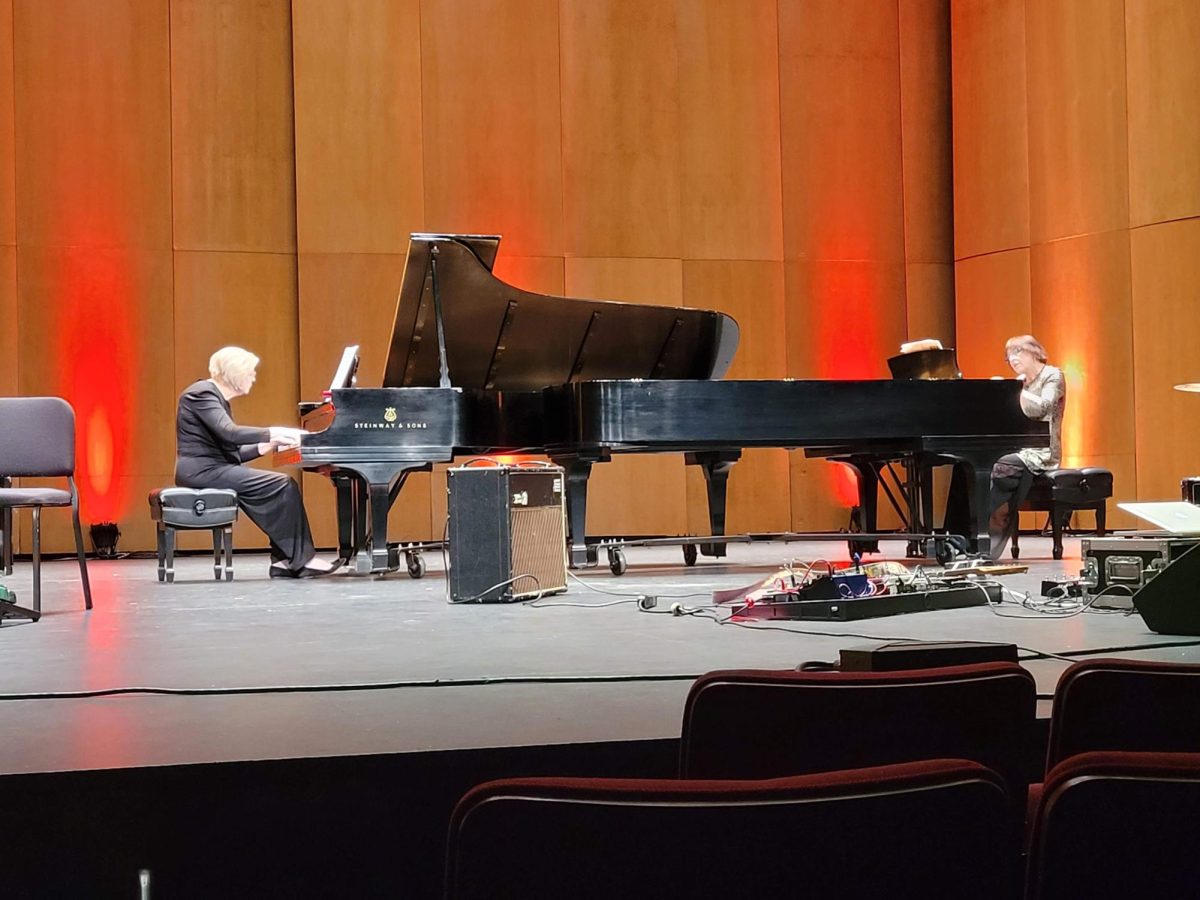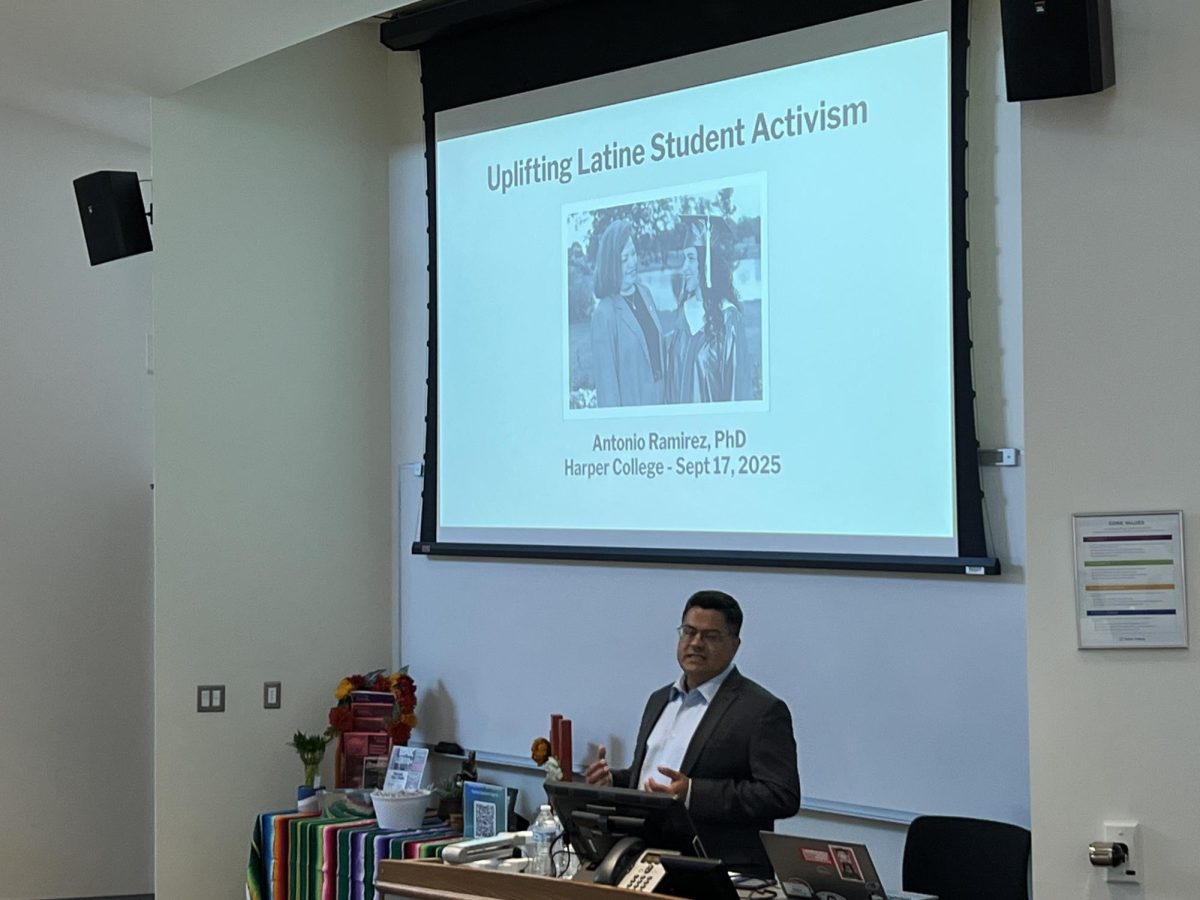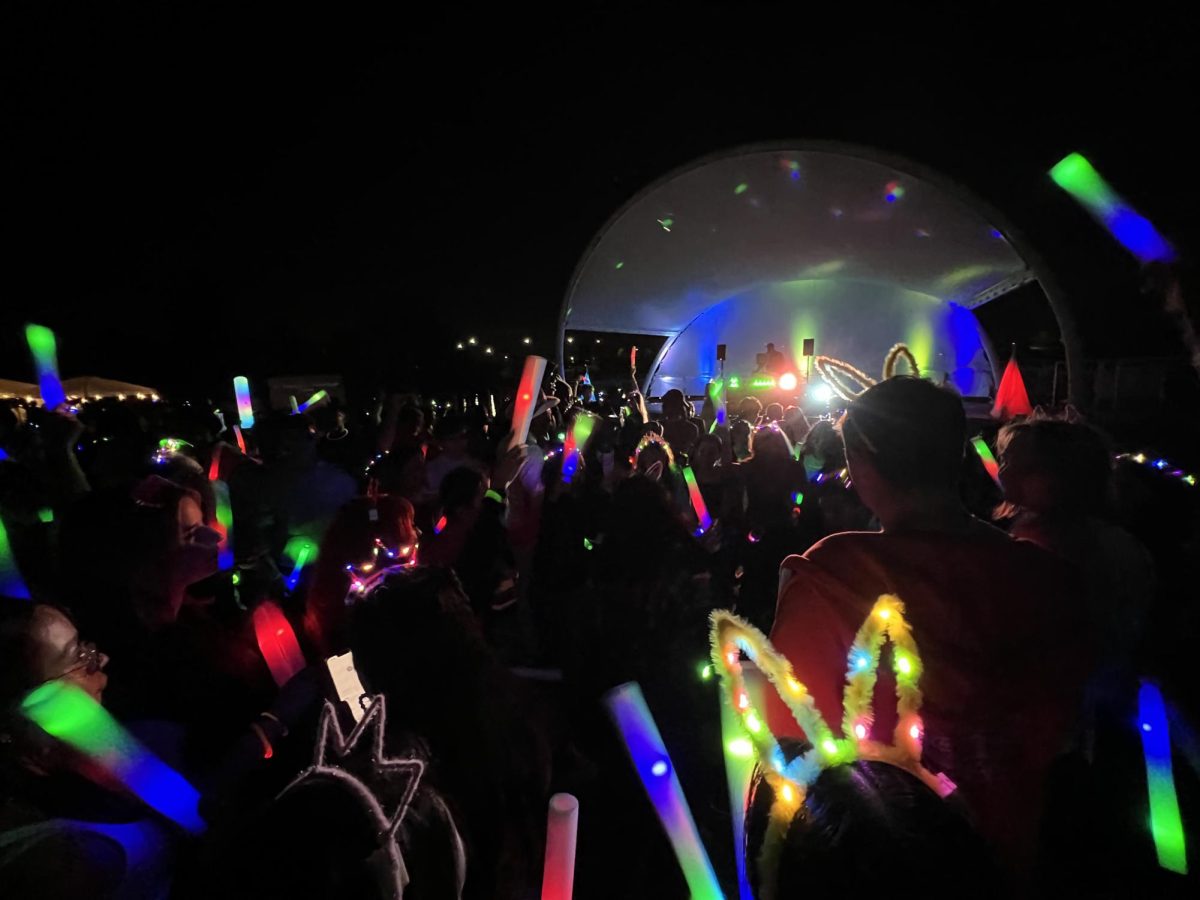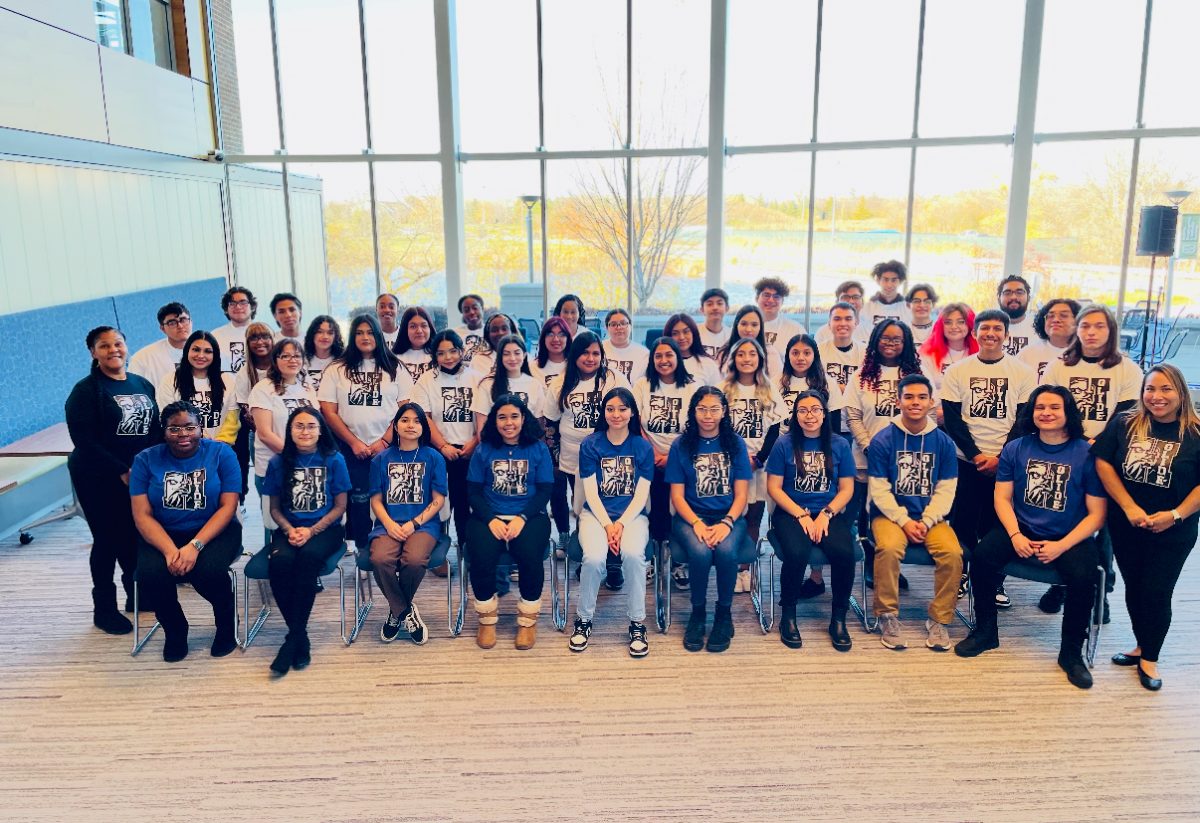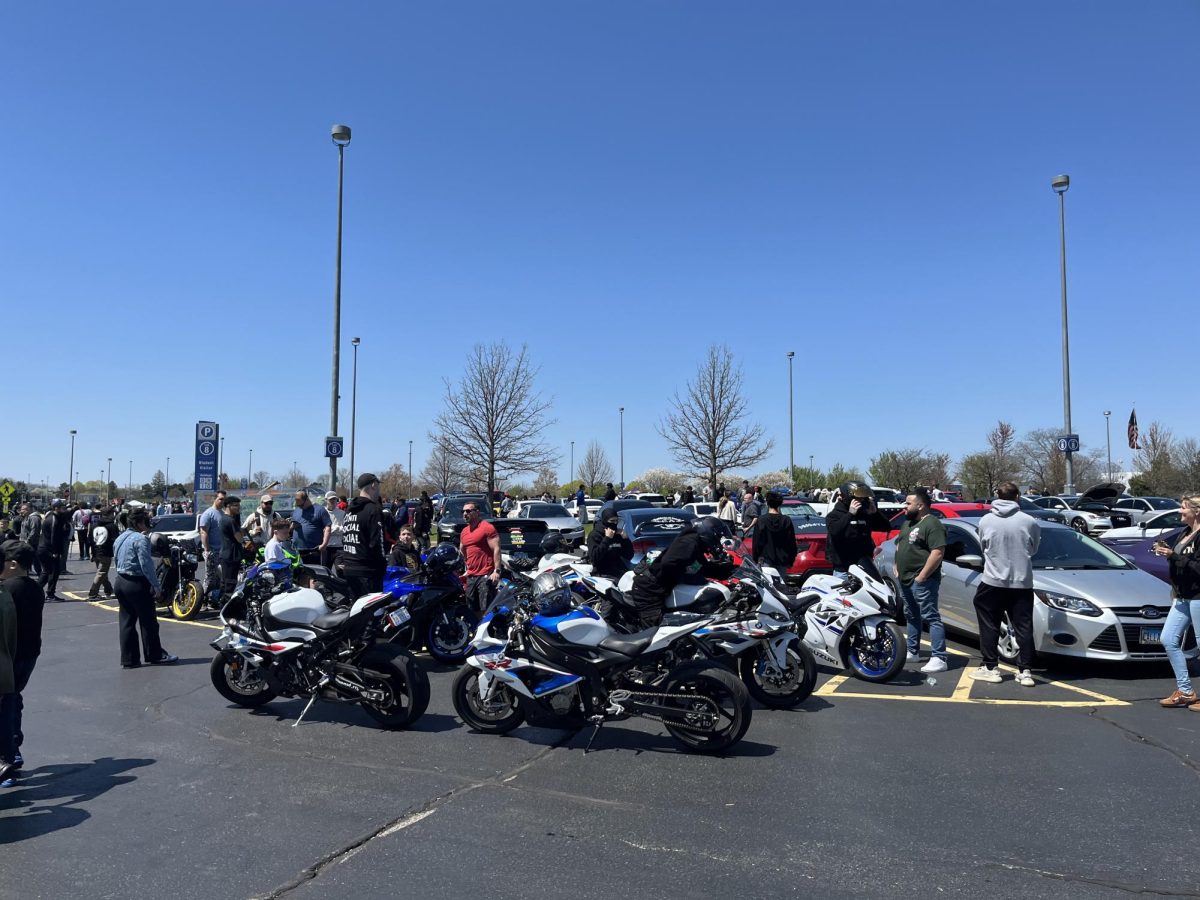As the audience found their seats and settled in for the Music Department Spring Festival, department chair Edward Hamel took center stage to welcome them to a night of “different volumes, different genres, different eras” – and, perhaps intentionally, the first two acts of night one were quite the contrast.
First up was the pianist duo of Janice Raza and Olga Bornovalova, performing a medley of tracks from Leonard Bernstein’s soundtrack to West Side Story on dueling grand pianos. Though there were no actors up on stage to accompany them, Raza and Bornovalova’s piano-playing alone served to recreate the story – and when the piano wasn’t the right tool for the job, such as when you, say, want to recreate the rhythmic snap-and-walk tough guy persona of a Shark and/or a Jet before a big rumble, the two made it work with an occasional clap-clap-clap of their hands.
After that particular duo took their bows, it was time for a more electronically-inclined performance, as Hamel returned alongside fellow music department professor Sadie Hochman-Ruiz to perform an improvisational piece on electric guitars. And, like he had promised from the start, this was definitely of a different genre, entirely of a different era and not even within the same stratosphere of volume. Whereas Raza and Bornolova were telling a story, Hamel and Hochman-Ruiz were building a monolith, as jagged blasts of feedback and distorted guitar seethed out from their amplifiers.
“We have a lot of great musicians in our faculty, but lots of it is concert music based or chamber music based,” Hamel said. “Our influences are rooted in improvisational, drone-y, kind of ambient music, and all kinds of noisy metal. [..] I’ve been messing with [guitar] pedals and stuff ever since I was in my late teens listening to people like Glenn Branca or Brian Eno or Robert Fripp, all stuff like that. Honestly, I’m trying to get my guitar to sound like a synthesizer – trying to hide the sound of the pick, stuff like that.”
Though these were just two of the performances at the Spring Festival, they served as a perfect microcosm of what Hamel and his department had in mind for the return of this particular event, which used to be known as the Chamber Festival.
“You know, the last time we did this, I think was right before [the pandemic] in 2020, because it was always the first week of February,” violin and viola professor Edgar Gabriel said. “For some reason there was always a snow storm every time we did this concert; today, the weather is so much better.”
Gabriel was involved in three different ensemble acts between the festival’s two nights. However, even within Gabriel’s own performances, there was a large degree of diversity, playing in not only the styles of classical and jazz, but also performing a southern fiddle-style song during his performance of “The Beaumont Rag” with the Continental String Ensemble.
According to Hochman-Ruiz, this sort of eclecticism is exactly what they should be striving for.
“The department has had a vision to try to expand a little bit more into electronic music, a little bit more diversification,” Hochman-Ruiz said. “We’re bringing in new courses and trying to open ourselves up to new listeners and new ideas. […] [Hamel] wanted to do something a little bit different with this show, and I was just lucky that I had become friends with Rebecca [Scott] and had learned about her band.”
Dr. Rebecca Scott is not only a philosophy professor at Harper College, but she is also the lead singer and guitarist for the shoegaze rock band Panda Riot, which was the headlining act for the first night of the festival. Similarly, night two was headed up by local rock and singer-songwriter musician Jenni Stark – both a far cry from the chamber music that the original incarnation of this music festival was based around.
Shoegaze is a style of rock music that largely focuses on manipulating the sound of the guitar, often through using effects pedals. Though not typically improvisational like the piece done by Hamel and Hochman-Ruiz, their styles have a lot in common — especially when it comes to distortion and volume.
“We’re not playing like virtuoso guitar riffs or something like that. It’s more focused on the texture and layers of sound, which is a different approach to just thinking about music in general,” Scott said. “[It’s less about] these notes played at this time and in this order, and more about how we create these sorts of textures.”
In fact, the genre is called “shoegaze” because guitarists on stage are often so intently focused on making sure they’re using the right settings on the right effects pedals at the right time that they aren’t usually making too much eye contact with their audience – instead, they’re gazing at their shoes. Between Panda Riot and the improv duo, the stage was littered with pedalboards on night one. Ironically, however, Hamel prefers to play barefoot.
“Some of it is like a stage thing, like an anxious-y weird thing — like a Die Hard thing, like a ‘make a fist with your toes’ thing, you know?” Hamel said. “But it’s also because I turn knobs and stuff with my toes. […] I’ve gotten rid of some of that – like these volume pedals, they can take care of that for me – but with some stuff? I need my toes.”
Hochman-Ruiz agrees to disagree.
“He didn’t even get a pedicure first!” Hochman-Ruiz said.



